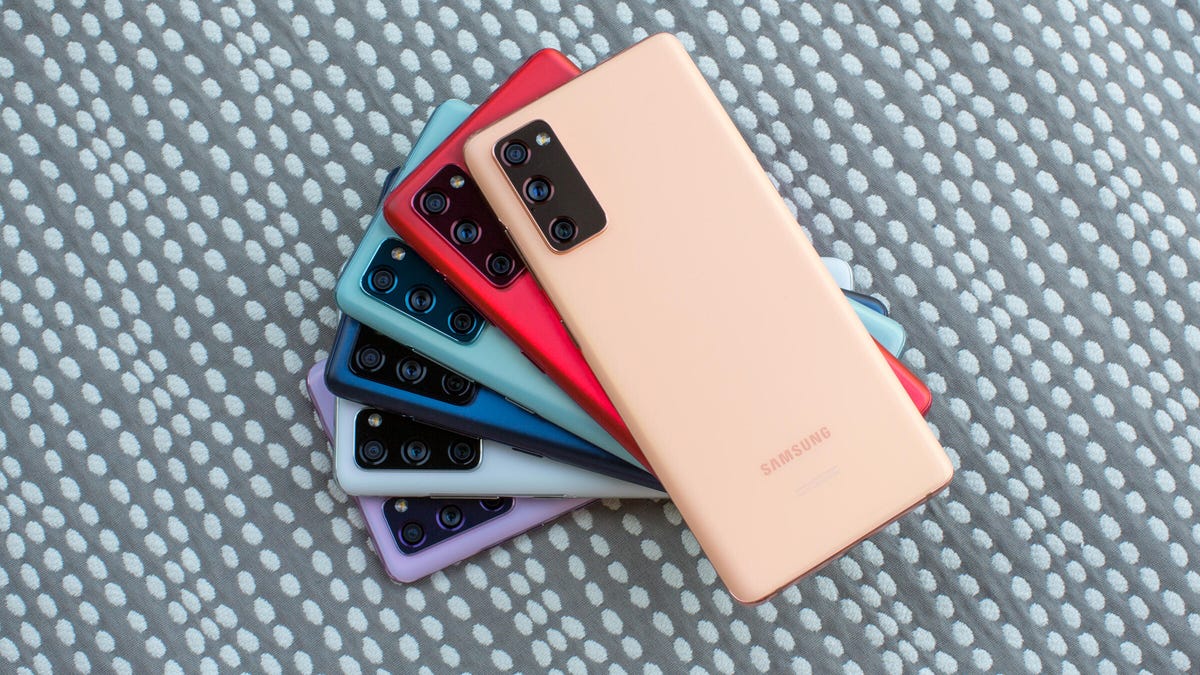Samsung once again tops smartphone market, analyst says
The overall market also showed improvement in the third quarter, according to IDC.

Samsung tops the list of smartphone companies in the third quarter of 2020, according to an IDC report.
In the third quarter of 2020, Samsung once again claimed the top spot in the smartphone market, according to a Thursday report by market researcher IDC. The company shipped 80.4 million smartphones , up 2.9% year over year. It now has a market share of 22.7%. Xiaomi also notably ranked in third place, ahead of Apple in fourth.
The worldwide smartphone market showed overall improvement in the third quarter, as shipments dropped just 1.3% year over year, IDC says. A total of 353.6 million smartphones were shipped during the quarter, and though the market declined, it performed better than IDC's former prediction that there would be a 9% year-over-year decline. "This is largely attributed to the re-opening of economies around the globe as COVID-19 restrictions were gradually relaxed," the analyst said in the report.
Some key markets saw faster-than-expected recovery, such as India, Brazil, Indonesia and Russia.
"Although there was an element of pent-up demand that fueled market growth, it was mainly the array of heavy promotions and discounts that accelerated growth in these markets," said Nabila Popal, research director with IDC's Worldwide Mobile Device Trackers. "In India, distance learning has actually boosted the demand for low-end smartphones as they are a more affordable option compared to tablets . The increased low-end demand only further increases competition and adds pressure to the vendors' bottom line."
On the other hand, larger markets like China, Western Europe, and North America all saw the biggest declines in the third quarter. This was partly due to the iPhone 12 launching a month later than usual. Still, 5G promotions are on the rise in many of these markets, and a range of products are now available at various price points.
"While some of the topline numbers may not seem pretty, we are seeing a lot of improvement in the smartphone market both in terms of supply chains and consumer demand," said Ryan Reith, program vice president with IDC's Worldwide Mobile Device Trackers. "In the large developed markets, it is very clear that 5G will be positioned to most consumers as their next phone regardless of which brand or price point they are focused on."
Still, Reith notes, "consumer demand for 5G is minimal at best."
Besides Samsung, the other top phone companies according to IDC were Huawei, Xiaomi, Apple and Vivo, in that order. A Thursday report by Canalys showed the same ranking, noting Xiaomi had placed in the top three vendors for the first time.
"Xiaomi executed with aggression to seize shipments from Huawei," Canalys analyst Mo Jia said in the report. "Xiaomi added 14.5 million units and Huawei lost 15.1 million. In Europe, a key battleground, Huawei's shipments fell 25%, while Xiaomi's grew 88%. Xiaomi took a risk setting high production targets, but this move paid off when it was able to fill channels in Q3 with high-volume devices, such as the Redmi 9 series."

